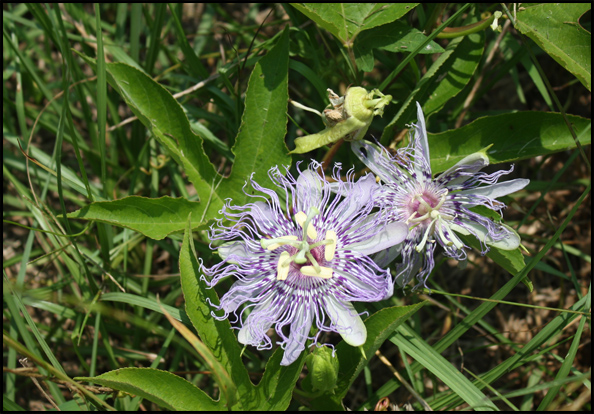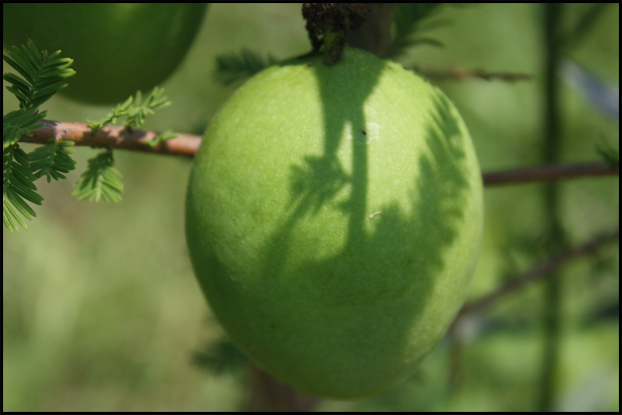PASSION FLOWER
BOTANICAL DESCRIPTION AND IMPRESSIONS:
Passion flower is one of the most beautiful flowers in all of nature. It is both uniquely colored and sculptured simultaneously. While Iris is more beautiful in its coloration, the intricate shape of Passion flower gives it a unique place among connoisseurs of Mother natures beauty. The name has been given by some to be connected to the shape of stamens likened to loaves of bread used in the Passover thus indicating the passion of Christ. Although this may be it may also be due to the fact that it was used by the early monks to decrease excessive passion. This property is well documented in Passion flower.
From wherever it gets its name, one thing is certain, it is an beautiful and very useful vine. Passion flower is a vine with tendrils to support the vines. It generally grows along the ground in the open but if it is near a pile of any kind it will cover the pile in a somewhat matted fashion. I have seen it grows very well on bales of hay which had decomposed some. It also does nicely on piles resulting from cleared land. The leaves are alternate, generally palmately divided (some undivided) with stipules. The flowers are perfect; the calyx is of 5 sepals united at the base to form a cup. And usually have the color of the petals at least on their inner surface. The 5 petals are inserted on the calyx throat, which is a complex, double or triple filamentous crown. The filaments of the 5 stamens are united to form a tubular sheath for the long-talked ovary, upon which are the 3 club shaped styles. The anthers are large and fixed by their middle. The many seeded, 1-celled berry like fruit is edible. The seeds are invested by a pulpy substance. These seeds are sort of reminiscent of pomegranate seeds. The pulp is very acidulous. Children often play with these fruits and they are referred to as may-pops.
The Whole vine is the part used when in flower and many times the fruit will be interspersed in the preparation. This is perfectly acceptable. Some authors use a part of the root. Many times when harvesting the vine some root will come up with the tug. Of course the leaves are included in the preparation. Generally the vine is crushed by hand or clippers and is quite easy to prepare. However its ease of preparation doesn’t mean it isn’t as useful as some more difficult to harvest herbs.
Passionflower is one of the most useful herbs because of its wide range of applications in nervous disorders. It is not a sedative but is classified as a hypnotic. This means a mild sedative. This is very useful because although passionflower helps to relax and allows rest, it doesn’t cause one to be unable to function normally. It is many times referred to as taking the edge off. This is a very useful property in western culture because of the constant strain on the nervous system. One property that is very useful is its ability to help one sleep when the body is so fatigued from overwork that we can’t fall asleep. At the same time it helps one to wake up refreshed. These relaxing properties are very useful in very many disorders and I have found it eminently useful for many children’s disorders.
These include conditions such as soothing the irritation from teething. It is stated in Kings that passion flower’s antispasmodic action can even overcome the convulsions that sometimes occur in extreme conditions of teething. It is very useful to quiet the nervous system in fevers also. Combined with Chamomile and Catnip it forms a very reliable children’s formula. For extreme pain passion flower used in large doses can be of some value although it has to be persisted . Headaches from many sources can be aborted if taken in the beginning and continued with in 40 to 60 drop doses can be aborted. Passion flower can be taken in very large doses with complete safety. In the present culture where the condition of attention deficit disorder is so much diagnosed passion flower has proven to be specific. It soothes the nerves and helps focus the restless mind. I have combined it with different nervines, but have found the combination of Willow Blossoms (Salix Nigra) and Passion flower to be very useful because they both have the property of diminishing excessive passion. I have often said that if we could put a combination of Willow blossoms and Passion Flower in the drinking water systems in all our schools, we could solve all the worlds problems.
For its nervine properties passion flower combines very well with skullcap, oats, etc. And it is nearly always included in nervine formulas. The dosage can be the usual 15 to 30 drops but one should not hesitate to use large doses freely as it acts very quickly.


